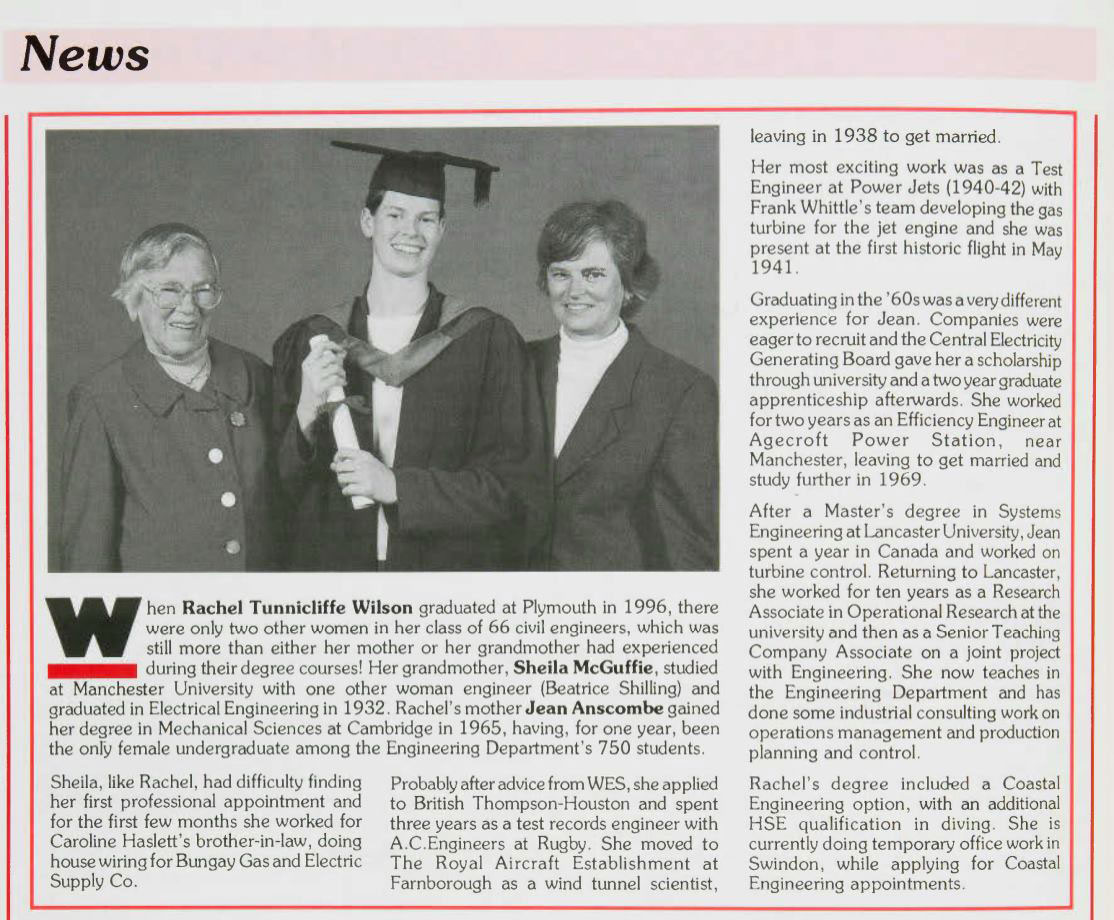At the beginning of 2021, I was offered the chance to take on a placement module as part of my Master’s degree in the History of Science. Although we were given the opportunity to collaborate with a number of incredible institutions here in Manchester, the Science and Industry Museum’s project brief excited me the most.
Prior to the reopening of their Power Hall gallery, now scheduled for 2023, the curatorial team were looking for help in recontextualising exhibits with a human focus. In particular, the project was seeking out opportunities to include the voices of those who had often been excluded from engineering history.
As a student who spends the majority of their time researching and writing about the lives of women in physics, I was delighted to have the opportunity to conduct research a little closer to home, supervised by Curator of Engineering Sarah Baines.
As an undergraduate in astrophysics, I’d often visited the museum to see displays on the Zeta fusion generator or the Manchester Baby computer. The Power Hall was an equally intriguing prospect, although a healthy fear of thermodynamics often kept me from dwelling on the exhibited engines for too long.
My work on this project included researching and reforming the exploits of early women engineers into character focuses—short biographies highlighting their major contributions to Mancunian engineering. The recently digitised journal of the Women’s Engineering Society, The Woman Engineer, was quickly identified as a key resource to the project and has provided such a wealth of information as to be indispensable. Although thousands of names have passed through its pages, it was not uncommon to find that entire careers and lives had been documented in extraordinary detail.

Image credit: The Women’s Engineering Society
The journal was happy to report, for example, that Sheila McGuffie had completed her Bachelor’s degree in electrical engineering at Victoria University in 1932, as one of only two women in the department. After a series of regular reports on her career in aviation engineering, she appeared again alongside her daughter and granddaughter in a 1997 issue, both of whom had gone on to gain degrees in engineering. Gertrude Entwisle’s exploits had been similarly well-documented; from joining the Society at its formation in 1919, to serving as its President in 1941–43, to her eventual retirement from Metropolitan-Vickers as the first woman in Great Britain to have a complete career in engineering, every milestone was celebrated.

Image credit: The Women’s Engineering Society
Similarly, struggles against discriminatory hiring practices and governmental restrictions on women’s labour often filled its pages. Originally formed to protest the Restoration of Pre-War Practices Act, which would send women in wartime manufacturing work back to the home, the Society continued to document its members’ efforts to redress restrictive social norms. Until 1938, for instance, Metropolitan-Vickers continued to operate a marriage bar for its female employees. This would only change once Anne Gillespie Shaw, renowned time-and-motion study expert, convinced the company board to change its policy following her and a colleague’s marriage the previous year.
I regret that the nature of this research—reforming marginalised narratives from the annals of history—is one that often returns frustration. Historical records do not carry information free of contemporary social context, and often one finds that omission or miscategorisation of marginalised lives speaks volumes in itself.
I am, however, grateful for the time and patience of those who have archived sources such as The Woman Engineer. It has been an unending source of joy to encounter unexpected details of these women’s lives—one particularly memorable find was learning that Margaret Partridge, a talented electrical engineer, was once chased off a roof in London by a policeman when trying to repair neon lighting. After retiring to Devon with her lifelong companion, Margaret Rowbotham, the two opened a hotel and helped their local Women’s Institute string up lights in the village hall.
Over the course of this placement, I’ve learned how archival research—and often many hours of scrolling through trade journals—can be turned into exhibition and outreach material. My particular gratitude goes to Sarah Baines, Curator of Engineering and supervisor to my placement, as well as Dr Nina Baker, without whose extensive cataloguing of The Woman Engineer this project would not have been possible. Additional thanks are given to Hope Miyoba, the Science Museum Group’s Wikimedian in Residence—it’s with her consummate guidance that I’ve been able to publish my first Wikipedia article on Dorothy Smith, one of the project’s character focuses. My hope is that visitors to the museum in the years to come may enjoy learning about these pioneer’s exploits as much as I did.
Hudson Ray, May 2021
Hudson’s supervisor, Curator of Engineering Sarah Baines, said of Hudson’s work:
“Hudson’s research has helped to flesh out the stories of women engineers who either trained or worked in 20th century Manchester. Stories like these will be essential to broadening the examples of people in the refurbished Power Hall to reflect broader experiences of working with engines and power.
“Knowing more about the engineering careers and personal experiences of women engineers like Dorothy, Gertrude and Sheila enriches our understanding of Manchester’s engineering culture and will directly help us support visitors to engage with our fantastic engine collection.
“As well as contributing to a live gallery project, Hudson’s research has made it possible for them to add and enhance Wikipedia pages on women engineers in 20th century Manchester, making these stories immediately accessible and increasing the profile of women engineers on Wikipedia.”
Image credits: Women’s Engineering Society and the IET Archives